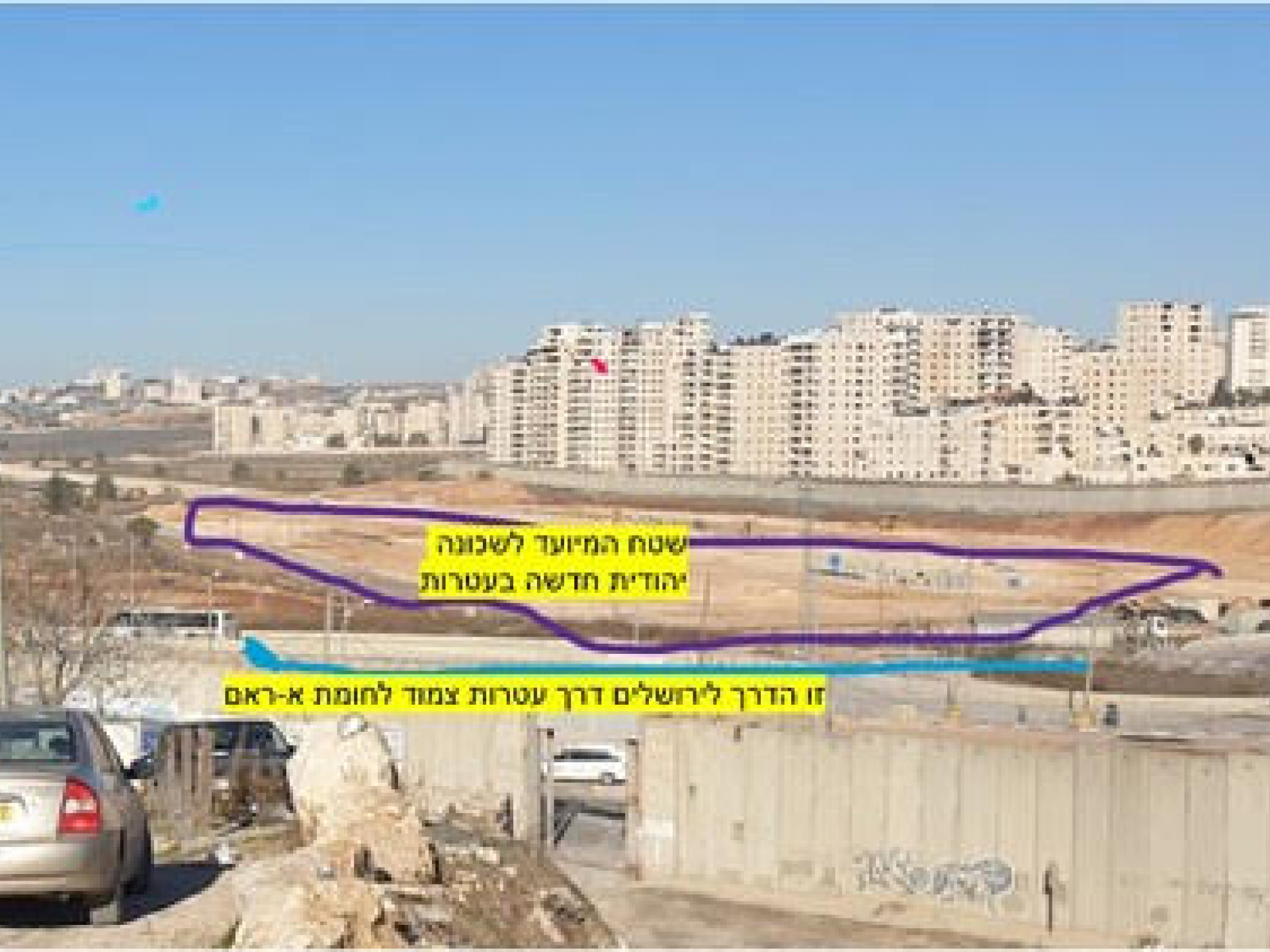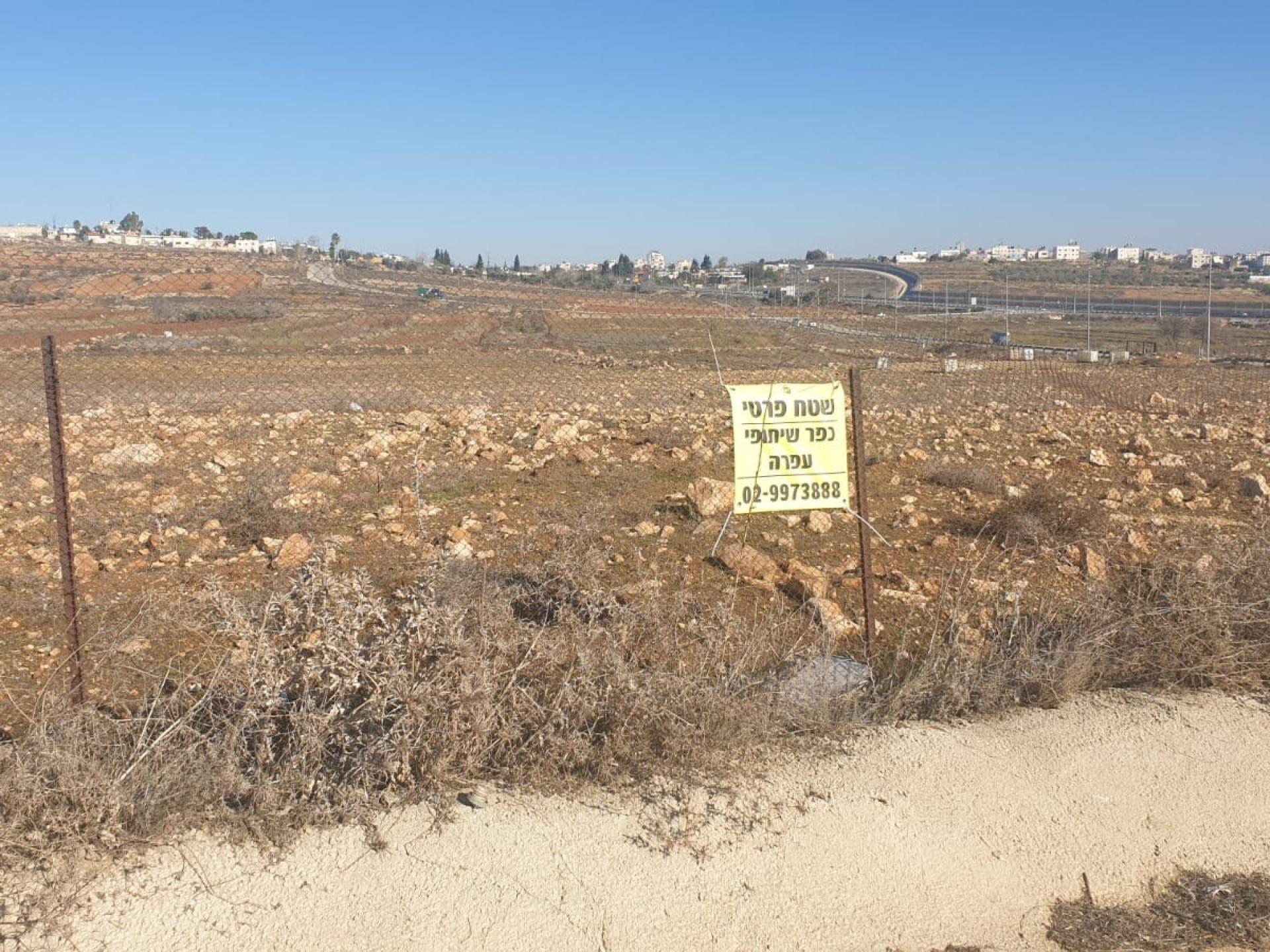'Anata-Shu'afat, Ar-Ram, Beit Ijza 6179, Hizma, Qalandiya
Jerusalem/Al Quds, “The Forbidden City”
07:15 Bethlehem checkpoint (300)
The day after Christmas, somewhat fewer workers than usual on the way from the checkpoint. A Border Police flying checkpoint on the road to Rachel Tomb’s checkpoint. Chana says it’s been there for a few days, checking documents of vehicles passing through. Because of the attacks? Shacks among the olive trees by the roadside. Their purpose is unclear. A very new hotel almost opposite the checkpoint. What a wonderful view for tourists!
Light traffic on the Israeli side of the checkpoint. The women’s lane is closed. We asked a few workers and also checkpoint personnel about Omicron restrictions, but apparently all the workers crossing have received a third shot and are not subject to restrictions. The security personnel were friendly. We left quickly. As is well known, the problem is one of great congestion , mainly on the Palestinian side, where there are only two revolving gates for entry.
for entry.
Vehicle checkpoint, Shu’afat refugee camp, ‘Anata (we drove through the checkpoint; we didn’t get out)
We were pleased to see that the traffic light at the Jerusalem and Pisgat Ze’ev exit has apparently been synchronized – it had caused massive traffic jams leaving the Shu’afat camp via the checkpoint. And – the children are on a two-week break and there is no pupil transport to Jerusalem.
Shops along the main road through the Shu’afat camp to ‘Anata are still closed, and it’s very dirty. The municipality cleans here - up to the Shalom neighborhood, whose residents are categorized as Jerusalem residents – but not sufficiently. The UN cleans within the refugee camp. The Palestinian Authority cleans in ‘Anata, which looks a little better.
Hizma, Jaba, Sha’ar Binyamin, construction at Qalandiya and ‘Atarot
We took Highway 437 to Hizma and Jaba. The army has piled earth and rocks at some of the exits from Hizma, and entry to the town is no longer possible there. Soldiers at the main entrance to Hizma – one at the traffic circle with weapon drawn, one inspecting documents and one supervising, A major traffic jam at the exit during the morning is extremely annoying. The supervising soldier explains (including with photos on his cell phone) that stones were thrown at cars and buses traveling along the road to ‘Anatot and Baq’a. They apparently know what they’re looking for, which is whey they’re checking documents. What’s strange is that Kamal, our driver, who’s a resident of Shu’afat and drives along this road, hasn’t heard of such incidents.
We continue to Jaba. The checkpoint is deserted and at the Sha’ar Binyamin industrial zone junction on Highway 60 we turn around and head back toward A-Ram and the Qalandiya checkpoint. On the way to the demolished traffic circle the work to lower the apartheid road, which will be restricted to holders of blue ID cards, continues apace. They’ll pass under the traffic circle and connect via Highway 45 directly with Highway 443 to Tel Aviv or Jerusalem.
We wanted this time to get an overall view of the work going on in the area so Kamal brought us to a hill on the outskirts of A-Ram which overlooks the entire area (see photo). Hanna noted that she finally understands the reason for the monstrous bridge over the Qalandiya vehicle checkpoint: it will connect to a terminal for buses to Jerusalem via ‘Atarot along the road running beside A-Ram’s wall. Everyone crossing through the checkpoint on their way to and from Jerusalem will use it. The remaining area of the ‘Atarot airport runways, which were demolished a few months ago, will be reserved for the new Jewish settlement at ‘Atarot which hasn’t yet been established (the plans were recently delayed at the last minute).
Via Highway 443 to Giv’at Ze’ev, and on to the checkpoints of the Bidu-Beit Iksa salient
Nothing new at these checkpoints that separate the salient’s farmers from their lands in the Giv’at Ze’ev – Giv’on Ha’hadasha- Ramot Shmuel-Ramot bloc. They also separate the residents of Nabi Samwil from their remaining land in the salient. We’ve never seen that these checkpoints were open.
Below the Biddu checkpoint is a “quality of life” road to an additional salient – Bir Nabala. We discovered on a fenced area near the checkpoint an interesting sign: “Private propery: Ofra Cooperative Village,” with a phone number where no one answered. Hagit Ophran from Peace Now is familiar with the location. It was purchased by the settlers in anticipation that the agricultural land would be released to expand the area’s settlements. The settlers arrange for everything to be taken care of “upstairs”!
The Bet Ijza checkpoint, adjacent to the Ramot Shmuel settlement, is an exception. There’s a wide gap in the fence where people go through on foot. The new addition here for the winter is a large carpet over the mud at the exit from the gap. Our Hanna crossed on the carpet and only because she ran out of time didn’t reach the next checkpoint in the salient that, in addition, divides villages within the salient from each other…
There’s no doubt that Jerusalem/Al Quds is “the Forbidden City” for all the residents of the nearby Palestinian villages and towns.


